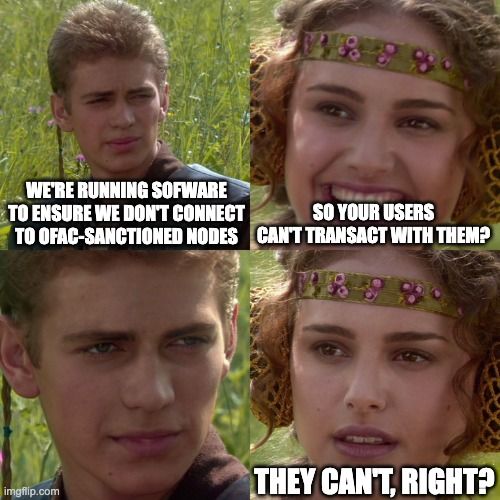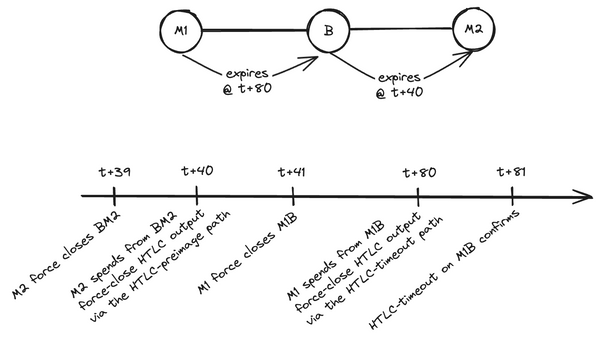#55 - Bitcoin Security with Jameson Lopp, LNM Fam, Lightning Ecosystem, and much more!

🎙️ Bitcoin Security with Jameson Lopp
As per his wikipedia page (classy), “Jameson Lopp is an American cypherpunk, software engineer, columnist, and Bitcoin advocate. Lopp is co-founder and CTO of bitcoin security provider Casa. Lopp has been publicly involved in cryptocurrency dating back to 2012. He was the subject of a swatting attack in October 2017. As a result, Lopp made the decision to live off-the-grid, which has been written about in The New York Times. In the effort, he purchased a decoy house, created a number of business entities, and paid private investigators to try and locate him. Lopp's whereabouts remain unknown.”

What’s missing in the page is the fact that Jameson is an extraordinary Bitcoin evangelist and researcher, who has put up an amazing list of Bitcoin & Lightning resources, and produced tons of excellent writings over the years.
Welcome to Bitcoin, newcomers! Here's your FAQ:
— Jameson Lopp (@lopp) November 19, 2017
Q: Who should I trust?
A: Nobody.
Q: When should I sell?
A: Never.
Q: Is Bitcoin dying because ____?
A: No.
Q: What have I gotten myself into?
A: Nobody knows.
Q: How do I learn more?
A: https://t.co/POqNimM4uy
Many thanks to Jameson for being part of our humble newsletter 🙏
In 2022, what does it mean to be a cypherpunk? How has it changed from Satoshi's era?
Jameson Lopp: While the cypherpunks are no longer a close-knit community that are all on the same mailing list, there are some nice aspects of the movement becoming more mainstream. It used to be that in order to be a cypherpunk you needed to be a skilled programmer, but today we operate under a much larger tent. While we do need some people to write code, we also need people who review it, run it, and promote the adoption of said code. This is why I consider anyone who promotes the use of privacy enhancing technologies to be a cypherpunk.
On the bright side, I conducted a poll recently and 70% of the respondents said that they considered themselves to be a cypherpunk.
A cypherpunk is any individual advocating widespread use of strong cryptography and privacy-enhancing technologies as a route to social and political change.
— Jameson Lopp (@lopp) August 18, 2022
Do you identify as a cypherpunk?
It’s a little known fact but you were once a big blocker. What made you reconsider? What, in retrospect, made the Lightning Network a more effective scaling method?
Jameson Lopp: I changed my mind when I went full-time as a Bitcoin infrastructure engineer and got hands-on experience understanding the scaling challenges of running nodes and building services on top of them.
Before I worked on Bitcoin I was actually a Big Data engineer at a marketing company. I worked on multi-petabyte clusters of data and when we planned to scale it meant that we needed to ensure that our users never maxed out the potential throughput of our system. Thus I came into Bitcoin with the perspective that full blocks were a poor user experience that would stifle adoption and that we always needed “head room.”
In a centralized system, you can have engineers perform capacity planning and change the system to accommodate the needs of the users. In a decentralized system, engineers must change how they use the system because they can’t change the system itself.
As such, the proper engineering perspective that preserves the valuable properties of Bitcoin is to use the scarce resource of block space more effectively rather than requesting that the world should make more of it available. In order to do so, we need to scale via layers, which is the same way that the Internet has scaled (via a 7 layer model).
You can demonstrate how a lack of internet privacy can result in physical violence by citing your experience with swatting. What easy actions can anyone take to better protect their internet privacy?
Jameson Lopp: Minimize your footprint. The easiest way to do this is by installing ad blockers. The next most effective thing requires a bit more of a lifestyle change in that you need to stop giving out your personal information to online services. That means, don’t fill out information in forms that isn’t required. And if a form DOES require information, consider filling in false information if it’s legal to do so. This can be unnerving for folks who feel like they may be doing something wrong, but you should be aware that it’s only illegal to give false information on legal contracts or to government entities
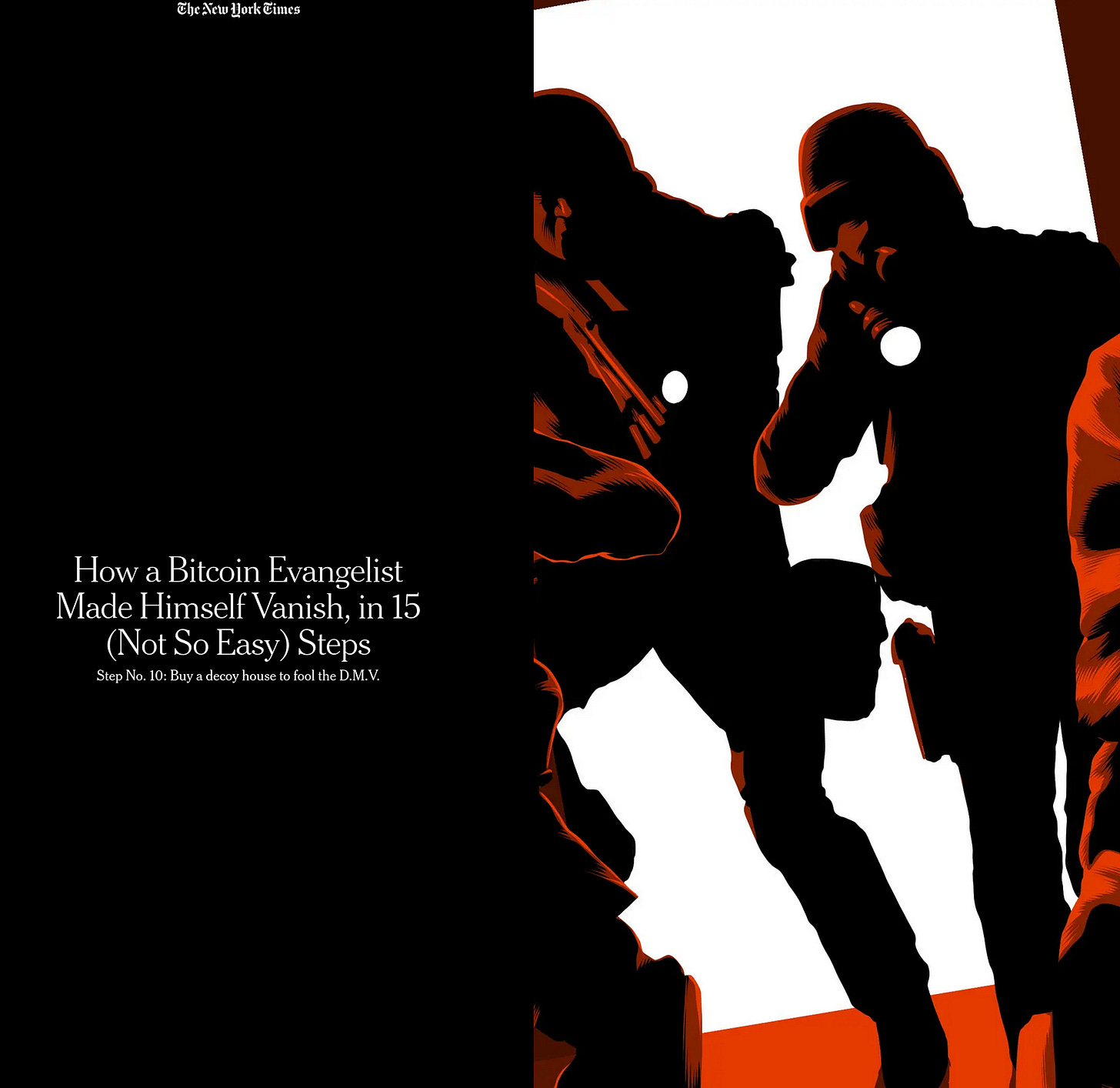
You avoided losing any Bitcoin in the Mt. Gox debacle since you already practiced self-custody. Although time has passed since then, managing keys can still be frightening for newbies. What advice would you give?
Jameson Lopp: You don’t need to jump into the deep end - you should start off small. I’d start by buying a hardware key management device and playing around with small amounts of bitcoin. Or if you want to be extremely frugal you can play with testnet bitcoin, which has no value. After you’ve gone through the process of creating wallets, spending funds, and restoring wallets from backups several times you should start to feel more comfortable. I’d also highly recommend investing in education; check out some of my articles on key management and browse the multitude of resources I curate on bitcoin.page.
Bitcoin security pro tip: protect your software with hardware. pic.twitter.com/R4KeRGRcTP
— Jameson Lopp (@lopp) October 26, 2017
What aspects of Satoshi's work most intrigue you?
Jameson Lopp: I’m most impressed with how well the game theory behind the system has held up over the years. Bitcoin has proven itself to be a robust sort of clock that is actually becoming more accurate and has even withstood nation state attacks. I also think there are a lot of mysteries that remain regarding the Patoshi miner that was likely Satoshi, which we can use to infer more about Satoshi’s intentions with regard to the massive hoard of BTC that were mined but never spent.
The invention of digital scarcity is of such economic importance that it's difficult to overstate its significance.https://t.co/03LyZbV21C
— Jameson Lopp (@lopp) October 10, 2022
What’s your view on tokens on Lighting?
Jameson Lopp: It’s a bit early, but if tokens on Lightning take off then they have the potential to be cheaper, faster, and more private than tokens on base layer blockchains. But this will by no means be a panacea - given the permissionless nature of the system there will be no shortage of bad ideas. I’m sure that plenty of tokens issued on Lightning will suffer from the same flaws as we’ve seen elsewhere, with poor economics, game theory, or centralized weak points.
⚔️ LNM Fam
We deployed a new minor release with several fixes and the addition of tooltips, which are brief informative messages which appear with a mouse-over on desktop or a click on mobile:
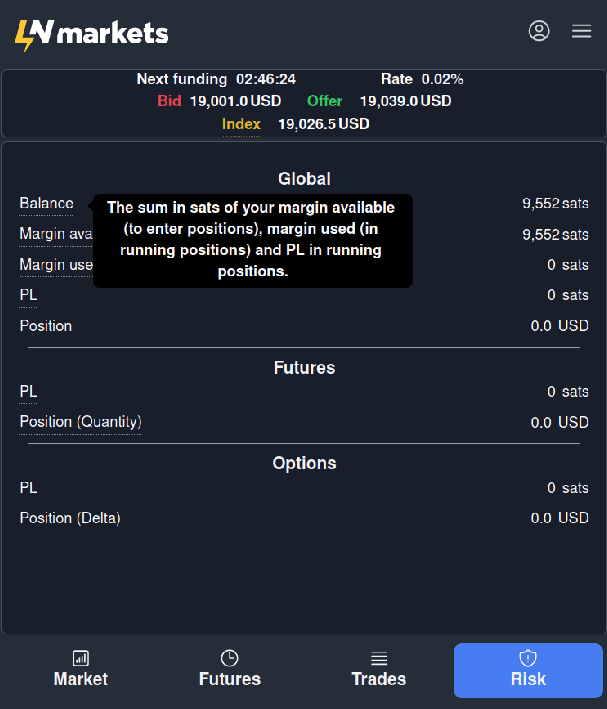
If you’re already familiar with the platform and the main financial terms, feel free to remove the tooltips in your Settings:
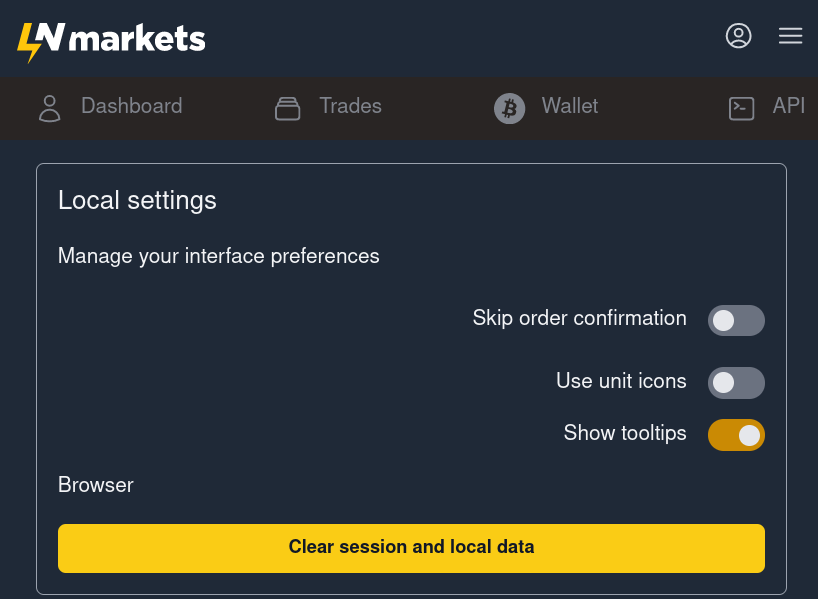
We had a cool trading tournament on Discord! Congrats to the 3 winners of the First Offical LNM's UpOnly Tournament: @luis_diamond, @Koty_Auditore, @ElOrganizador.
🔴FIRST OFFICIAL @LNMarkets FREE TRADING TOURNAMENT!
— LN Markets (@LNMarkets) October 6, 2022
Dear sers, [WE THE PEOPLE] as the coolest bitcoin derivatives broker ever built on ⚡️ would like to invite all of our pretty users to a Free Trading Tournament (entries will be on us) for the lulz and culture!
More info 👇🧵 pic.twitter.com/0qE6VcTQ8v
Stay tuned for another edition soon! And we received our largest Lightning deposit to date: 7,000,000 sats in a single Lightning transaction 🤯
⚡ Latest Strikes
A brief recap of what’s new in the Lightning world (full version here). Zip up your jacket, tuck your chin into the collar, and enter the storm!

Wallets & Tools
Alby Release (and Nostr soon)
The Alby team landed a new release, which improves the LNBits integration and allows users to connect from their own LNDHub instance (or the instance of a friend), and not just your BlueWallet Lightning account.
Additionnaly, Rene Aaron showed during Alby's Community Call a first version of a Nostr integration in Alby. This feature will allow users to sign Nostr messages in the browser using the Alby extension, with a user experience that is very similar to sending a Lightning payment (you click a button on a website and Alby pops up).
Tao Wallet
Danny Diekroeger launched a new project: Tao, an opensource BTC and USD digital wallet with support for on-chain and Lightning. The project is still in the early phase, but I find the idea quite interesting: let users choose what backend they want to use and let Tao interface with that. An experienced Bitcoin user could connect Tao to their own self-sovereign Bitcoin/Lightning node, while less tech savy users could connect Tao to their custodial account. Of course, the range of features will not be the same depending on the backend, and you could even have one Tao wallet connected to different backends, for different use cases.
Right now, Tao uses LN Markets as the backend, which enables users to perform BTC ←→ USD swaps on top of more classic wallet features (send & receive funds).
Ecosystem
BoltObserver - The Path to Reliability
In this blog post, Alexandre Bussutil from Bolt Observer addresses the question of reliability in the Lightning Network, and how to use observability to improve your node’s reliability, as well as check the reliability of a potential new peer.
Three areas of improvement are covered in the article: reachability, latency and connectivity. An actionable reachability improvement consists in having monitoring set up to check that your node is always reachable, and send an alert if it’s not. This way, you can detect quickly if something is wrong, and fix it.
Regarding latency, a good idea is to inspect the latency of a node before considering connecting to it. Many Tor nodes suffer from high levels of latency (several seconds), which impacts payment reliability a great deal.
Finally the idea behind connectivity is that the more nodes there are in the route of a payment, the more the chances that something goes wrong somewhere and the payment fails. Bolt Observer's explorer provides a nice tooling to see how far potential peers are from you in terms of network topology and help you decide whether or not to connect to them.
Onboarding nocoiners to Bitcoin & Lightning
Remember the Legends of Lightning contest I wrote about in the last edition of September? Juan is working on a cool project to onboard nocoiners and is looking for teammates for the tournament.
The idea is simple: a webapp where a bitcoiner orange-pilling someone can deposit sats, which can then be redeemed by the orange-pilled nocoiner later on, simply by scanning a QR code. This helps circumvent the classic problem of having someone install a wallet in a noisy pub.
Some Stats
LN.capital published the 4th issue of their Lightning Report. Take a look at it, because it’s clear and concise as always! Of particular interest for me was the 6 months comparison (now vs March) of big industrial nodes capacity, including wallets, exchanges and swap services. What we see is a global increase everywhere. On the wallet front, ACINQ remains unchallenged in absolute capacity, but custodial Wallet of Satoshi made some tangible gains.
⚡ Bonus
]🤫 The secret they don't want you to know™
— Joe Burnett (🔑)³ (@IIICapital) October 10, 2022
😬 That went fast
How it started vs how it's going a day later. pic.twitter.com/DgzudviEDu
— Lyn Alden (@LynAldenContact) October 12, 2022
👀 Bitcoin is hope
I spent this weekend teaching my friends how to send sats in seconds using #Lightning⚡️. It only takes a few minutes to convince them that the future of banking is #Bitcoin.
— Michael Saylor⚡️ (@saylor) October 9, 2022
🤝 Reach out on Twitter, Telegram and Discord to build together the future of finance on Bitcoin!
Any suggestion to improve LN Markets? Please share it here.

